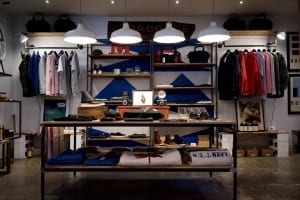From Building-Centric to People-Centric Workplaces

While the overall look and feel of an office space from an architectural and interior design standpoint can have its appeal, the true crux of the matter is how well the space enables and facilitates work.
Even before the pandemic required most workers to work remotely from their homes, employees were making demands for more flexible work situations and escape from the 20th-century office straitjacket. Agile working, hot-desking and the gig economy were already shifting attitudes away from the limitations of that one desk mindset.
Today, with good connectivity widely available, easy access to the internet and effective file sharing, any space can become a workplace and the pandemic proved that to all the remaining hold outs. At the same time, the pandemic also revealed the advantages and efficiencies of occasionally coming together face-to-face.
In the post-pandemic era, business leaders have an opportunity to shift the office space paradigm and give consideration to how their offices can operate in a way that enables and facilitates work. Specifically, the workplace can become a tool for organizational change. A 2019 Harvard University study revealed that organizations with a more employee-centric approach to office space see a reduction in absenteeism and staff turnover, and experience as much as a 16 percent rise in productivity.
Use these strategies to embrace 21st-century fit-for-purpose workplaces:
- Consider user experience. Creating a productive and innovative working environment requires understanding when, where and how people need to interact. Offer diverse work settings for the different functions people perform, along with areas to collaborate with colleagues, socialize or just take time out to think and relax. Ask yourself what behaviors you want to encourage, and then construct a setting that promotes and supports them.
- Create a dynamic ecosystem. Old attitudes about the office as a place where people merely put in their time must be replaced by new impressions of the office as a place where employees can up their game, give their best and deliver greater creativity and innovation. The challenge is to create workspaces that enable knowledge and information to be communicated effectively in an open and collaborative environment. This may mean bringing technological infrastructure up to speed and fit for purpose. To deliver 21st-century workplaces, there has to a joining of the dots between property, people and technology.
- Design workplaces to support wellbeing. Alongside employee productivity, take a holistic view toward engaging your people. For example, if people make use of the office regularly, they will value having a workspace they can personalized as opposed to relying on hot-seating arrangements that can lead to musical chairs. In a nutshell, a great workplace must be an investment in space and an investment in people in equal parts.
- Allow flexibility in where people choose to work. Put people in control of their work-life balance. The extent to which you empower people to make decisions about how they interact within their teams will foster a trusting employer-employee relationship and result in a boost to employee engagement. Further, this leaves you free to concentrate on the constructive management of aspects that contribute to the bottom line.
- Make decisions that reflect corporate values. The ubiquitous nature of social media means that society as a whole has its eye on your corporate values. Considerations such as engagement with the surrounding neighborhood, use of sustainable building materials and other socially responsible practices can meaningfully contribute to your brand’s status.
Every organization must now formulate its strategic thinking around turning placemaking into profit-making and creating new, more meaningful solutions for the workforce and the workplace. In order to deliver 21st-century workplaces, there needs to be a convergence of approaches to create workplaces that inspire employee engagement, foster creativity and increase productivity, while also improving a company’s capacity to compete and create value.
About the Author


